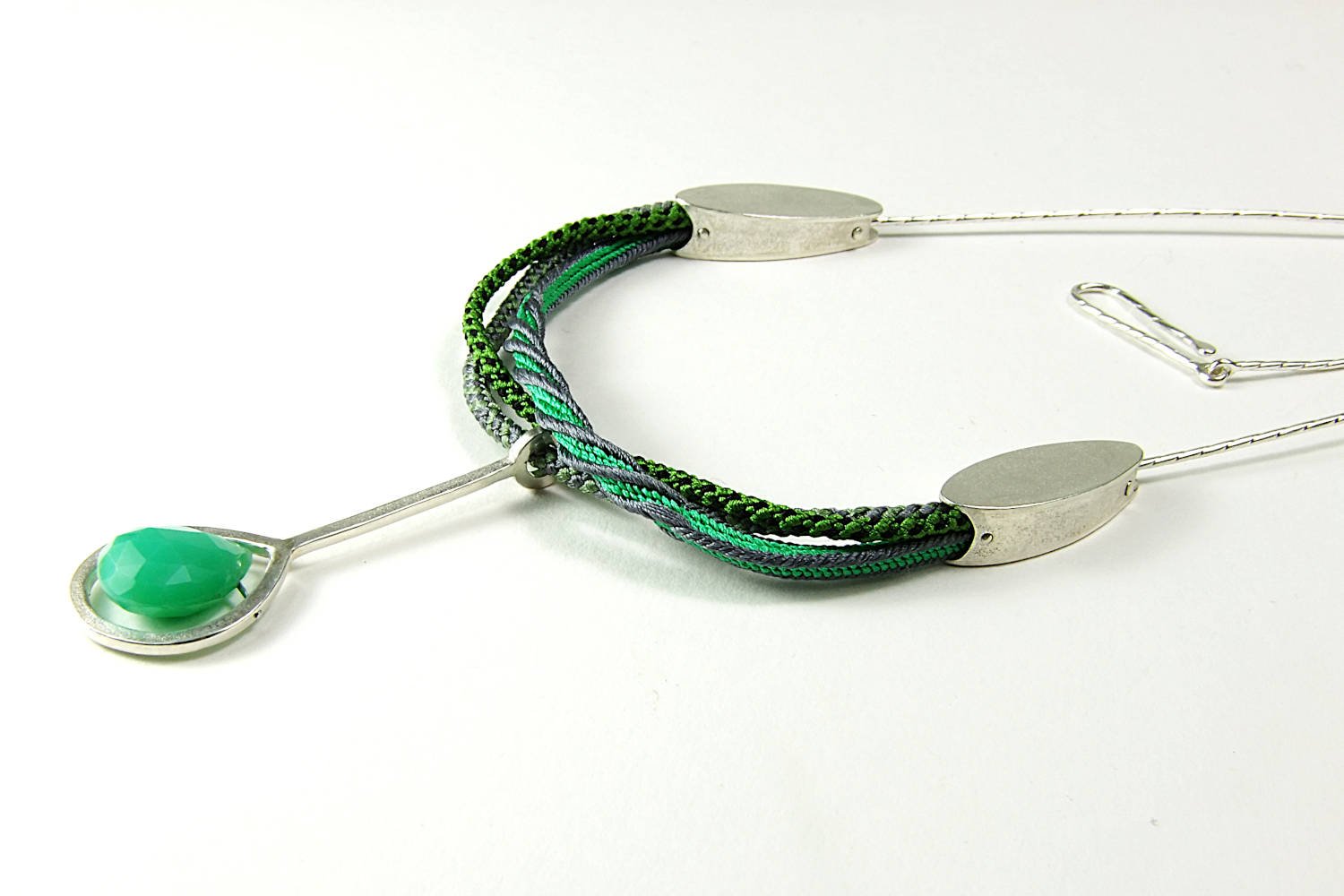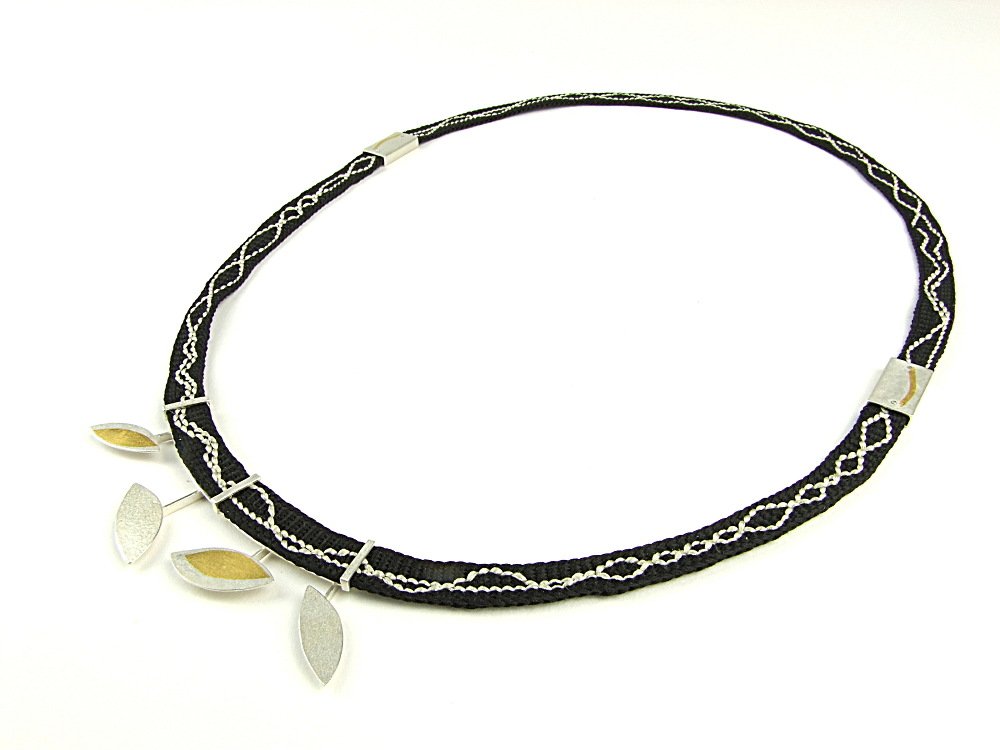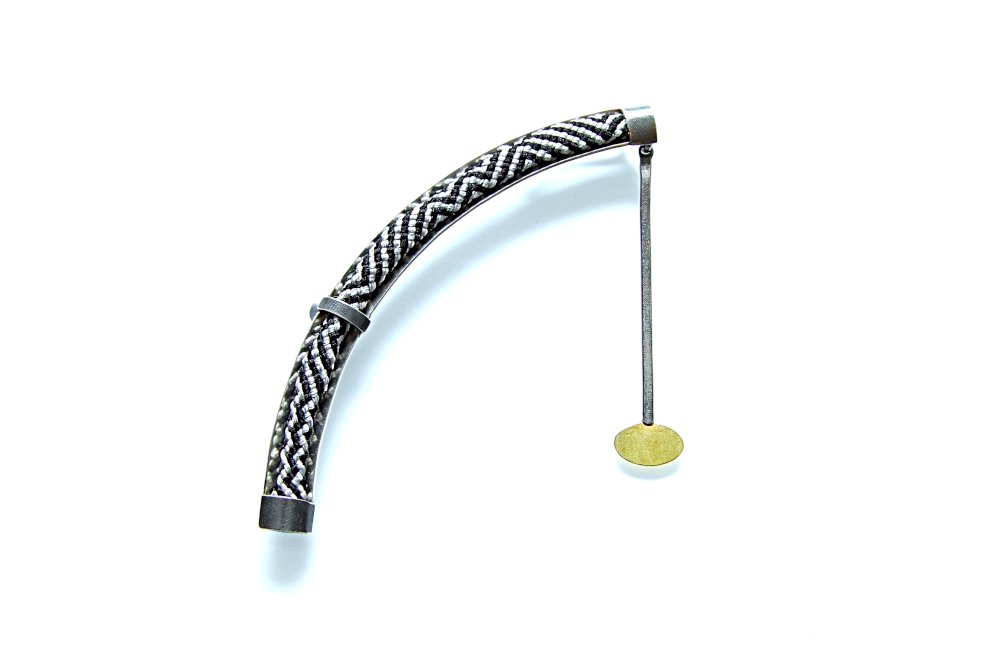Techniques
Keum-Boo
This is one of the main techniques I use in my work. It is an ancient Korean technique and literally translates as ‘attached gold’. It involves the heat bonding of 24ct gold foil (14 microns thick) to silver - a very clean process that doesn’t involve any harsh chemicals. Working just through the purity of metals, heat and pressure a permanent bond is created between the silver and gold.
This technique also allows me to introduce patterns into my work which would otherwise be hard to achieve. Below you can see some images of the tools and processes involved. Click to enlarge the images!
For more information on this technique please also see my Blog 8 which gives further details about Keum-Boo.
Kumihimo
Kumihimo is an ancient Japanese braiding techniques. The earliest records of braided cords were found imprinted on pottery. As the braids developed, they became a significant part of samurai armour, holding together the various parts of the armour and today still form an important part of the traditional Japanese attire, where they are used as obijime, a cord worn to prevent the obi from slipping in traditional Kimono dress.
I make my braids in my studio on a traditional Marudai (the braiding loom) and use them in the necklaces and brooches I make. The Marudai was made from wood by Michael Williams in Sheffield according to my specifications. I use between 16-24 tama (bobbins) onto which 6 silk threads are wound. The patterns are then created when I move the tama around the Marudai in certain sequences of movements. Many different patterns are possible and a change in patterns requires attention and patience.
The necklaces are designed in a way that the metal components accentuate and echo the beauty of the silk braids. Click to enlarge the images!
This is a very short video showing how I make the Kumihimo braids in my studio - a few seconds in the long process braiding.
Below are some examples of my work where I have used this technique. Click on the images for more information.
Folding
In my work I often use folding techniques to create interesting shapes. I am intrigued by how the metal can be made to move by scoring lines and folding it, much like origami paper constructions. In fact, this is how I often start, by making numerous paper models to visualise how the metal piece may look in the end.
















